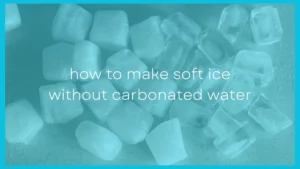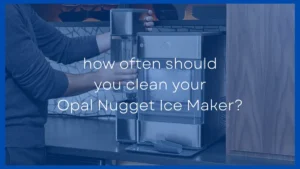We've all experienced wanting to make something cold but not having access to ice. So how can we allow something to get cold if we don't have access to ice?
There are several good ways to make something cold without ice. Using an electric fridge or freezer is ideal but evaporative cooling is another great option if you don't have access to a fridge.
But there are many effective methods that you can use to cool down something that's gotten uncomfortably warm. Let's take a look at the options available!
1. Use A Cooler

If you're trying to use a cooler without any ice, then good news: Coolers are super well insulated, meaning that if you can get the things that you want to stay cold in, say, a refrigerator or a freezer before you leave, then you can probably just leave it in the cooler for a couple of hours before it starts to warm up.
However, keeping something cold and making something cold are two totally different things. If you don't have any ice, it's much more difficult to cool something down using a cooler.
But there is hope! It doesn't actually matter what kind of cold things you put in your cooler, as long as they're significantly colder than the ambient temperature outside they will cool down anything you want cold through contact.
For instance, if you already have a cooler full of cold drinks, you can put another drink that has become lukewarm in the cooler with them, and even if there isn't any ice in the cooler it should cool down over a period of twenty minutes or so.
You can also use an electric cooler to make things cold if you have one. If you frequently find yourself needing to cool down objects on the go, this might be a good investment.
2. Evaporative Cooling
Historically evaporative cooling has been used on a large scale to keep food cool and it's still commonly used in many countries that lack widespread access to electricity.
When water evaporates, it requires energy to do so and therefore absorbs heat out of the air and anything else it comes into contact with. This is the reason that your body can use sweat to cool itself down when it's hot.
You can use this principle to cool down things other than people as well. The easiest way to do this is to take a thick cloth, wet it with cold water, and wrap it around whatever it is you want to cool down. As time passes and the water evaporates, the temperature of whatever you wrapped in the cloth will decrease, especially if you leave it where it is exposed to the wind.
The more wind there is the faster the water will evaporate the the more heat it will take with it making your item colder. You'll just need to keep your item topped up with water as if the cloths dries out then the evaporative cooling won't work anymore.
This works great for drinks and can be done in most situations if you can a fan or lots of wind.
In India, this method would be used with two ceramic bowls, the outer one filled with water and the inner one filled with whatever it is people wanted to keep cool before the invention of electrical refrigeration.
You probably can't freeze water like this, but you can definitely bring it down to a nice cool temperature.
3. Bury It
In most places, it's cooler underground than it is above ground. Especially if the sun is bright, burying the thing you want to keep cool in a nice shady spot can be a good way to keep it from getting too hot.
This will probably decrease the temperature over a long time, but mostly it's good for keeping the thing from getting any warmer than it is.
The best way to do this depends on what you're cooling. If it's a drink container or something else you might put your mouth on, then you should probably bury it so that the opening sticks out of the ground or have some way to protect it from the dirt. This can also allow it to be chilled by the wind, which can help it cool faster.
If it's something that you don't mind getting dirt on (or something that's very well wrapped) you can put it fully underground. You don't necessarily need to cover the hole after putting the thing into it, but you can if you like.
This works better in places with damp soil rather than places with dry soil. This is actually one of the ways to make ice last longer in a cooler, the ground is a natural insulator.
4. Radiative Cooling
If you have a whole night and you want to make ice to cool something down, you might be able to do that using radiative cooling.
Radiative cooling is the process by which heat is lost through the atmosphere into space. It must be done during the night when there is no sun. That way whatever you're trying to cool down won't just get heated back up by the sun.
Obviously, things get colder overnight, but we sometimes underestimate just how cold you can get things during the nighttime. If you leave out a shallow dish full of water during a clear night, sometimes even if the ambient temperature doesn't quite drop below freezing the water can still freeze.
5. Stick it in a River (or Lake)

It can be that simple sometimes. Rivers in particular are great at bringing things to a truly cold temperature, as flowing rivers resist freezing and are often sourced from cold mountain glaciers.
To use this method, you'll need to secure whatever it is you want chilled to something strong outside of the river lest it gets swept away. A tree trunk or sturdy man-made structure is usually good options for this.
You can also do this in a lake, although depending on the temperature of the lake it might not be as effective.
However, if you're out boating in a relatively slow boat like a canoe or a rowboat, you can also hang whatever you want kept cool as you travel. This is a great method to keep both fish and drinks cooled down over a long fishing trip.
And the best part about it all is that there's no need to worry about bringing anything with you but a line to secure whatever you want kept cold with and you should be good to go. The big downside is that it only works if you have proximity to water.




